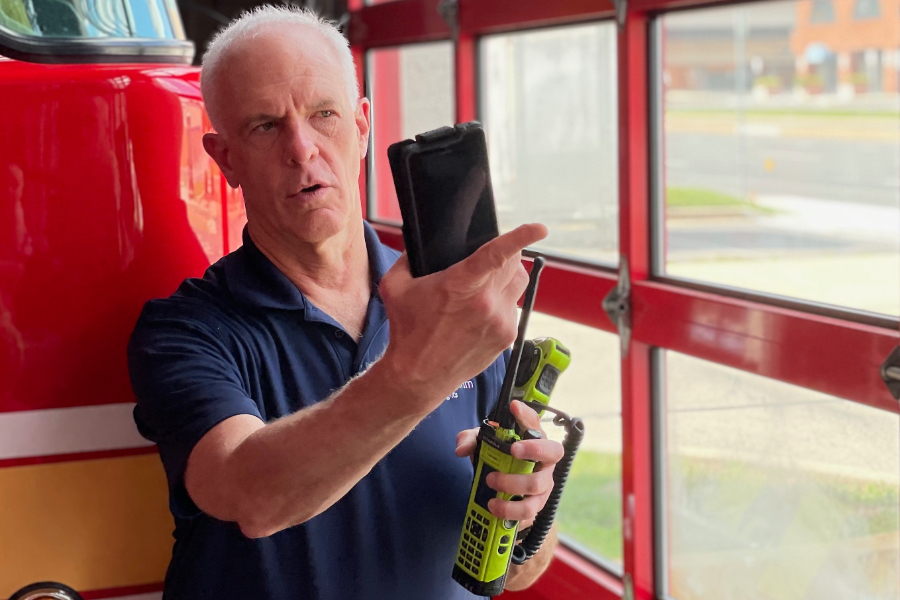Complacency is not an option
A rising tide of public-safety broadband networks (PSBN) around the globe creates opportunities for agencies delivering police, fire, and emergency medical services. But along with the chance to rethink traditional voice communications and add new broadband-enabled tools, agencies must assess and plan for the risk of network failure.
Networks designed for public-safety operations incorporate layered resilience features to reduce communications failure. A trunked-radio-system tower site, for example, can continue with local users following the loss of a backhaul link to the master controller. Likewise, trunked radio system users can continue to speak with nearby users using direct-mode “talk around” functionality when the network is not reachable.
The PSBN architecture lacks these traditional public-safety network resilience features. Moreover, complex LTE network and system service architectures have proven more fragile than simpler legacy narrowband public-safety communications systems.
The United States’ FirstNet network went dark for several days in a wide swath of the southern part of the country when a bombing resulted in the loss of power at a critical Nashville, Tenn., switching center on Christmas Day in 2020. Rogers in Canada experienced a national outage for the better part of a day in April 2021 when a contractor bungled a configuration change.
Of course, narrowband networks are not immune to failure, either. Significant multi-hour failures have occurred to Project 25 networks in the Washington, D.C., area in recent years. Regardless of the technology used, end-user agencies must contend with the prospect of failure.
Points of Failure
When assessing risk, end-user agencies must consider both planned failure points and the potential for unplanned catastrophic failures. No network can cover 100% of the geographic footprint, and planned failure results from trade-offs that politicians must make.
Large building structures, for example, may not support effective communications at the deepest points in the building. In a similar vein, remote wilderness areas may not be economically covered by a comprehensive terrestrial system.
Unplanned failures are more challenging, as the nature and extent may be limited only by the imagination. The risk assessment must evaluate the impact of a total communications loss following a natural or human-driven disaster.
When assessing risk with PSBN deployments, end-user agencies must proactively do the work to understand its coverage and capacity characteristics. Key Performance Indicators (KPIs) must be established and tracked to understand deficiencies.
For PSBNs operated by mobile network operators, it is incumbent upon the end-user agency to understand the network’s weaknesses and performance. Agencies must demand transparency from the network operator while independently assessing reality.
Mitigating Risk with Redundancy
Fortunately, a broad toolkit of solutions is available to agencies as they build a bulwark against failure.
In case of planned failure, agencies can bring supplemental communications to the scene. For large building structures, this means incorporating vehicle-mounted repeaters for the trunked radio system or dispatching a deployable LTE node for the narrowband system. The same approach can work to fill rural coverage gaps, as well.
Group voice communications—the heart of mission command and control—can be assured by deploying parallel systems. The expanding array of hybrid land-mobile-radio (LMR)/LTE devices makes this approach increasingly accessible for many public-safety agencies. If the push-to-talk voice is available to each user via either a traditional LMR system or a new PSBN, then an entire backup system is at the ready, in case of failure.
Maintaining dual group voice systems may not be economically practical. For agencies that must migrate all communications to a PSBN, an emerging suite of satellite-based capabilities can offer a cost-effective backstop against failure. New low-earth-orbit (LEO) satellite constellations promise ubiquitous terrain coverage at a modest cost in the future. But today’s satellite offerings show promise, as well. New approaches for blending terrestrial LTE and satellite-based communications in end-user equipment are entering the market.
Embrace the Prospect of Failure
End-user agencies are under pressure to do more with less. Shifting an agency’s mission-critical communications to a new PSBN architecture can help drive success. But agencies must embrace the prospect of failure with comprehensive ongoing assessment and energetic mitigation efforts. The stakes are too high for anything less.


















